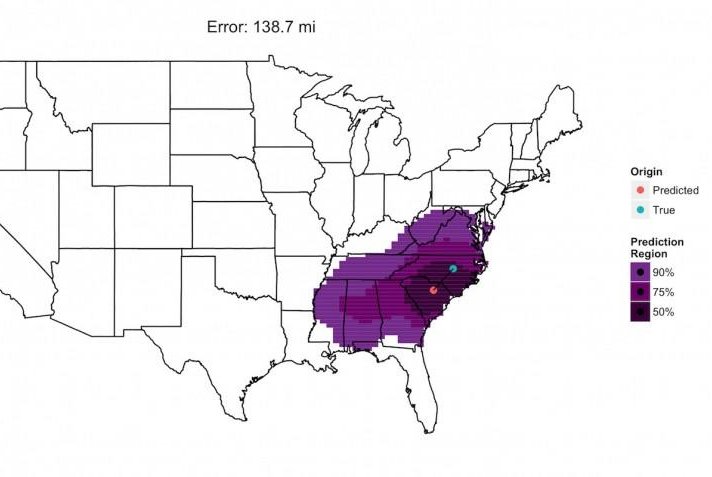A map shows the accuracy with which a model can pinpoint the geographical origin of a dust particle. Photo by NC State/Grantham
RALEIGH, N.C., April 15 (UPI) -- Researchers at North Carolina State University have developed a model that can predict the region of origin of a single dust particle based on fungal DNA.
Scientists were originally looking at what dust samples could tell them about the microbial makeup found in homes around the country. In looking at genetic signatures among the dust samples collected from more than 1,000 homes from 47 of the 48 contiguous U.S. states, researchers realized the different types of fungus found on dust particles varied dramatically from region to region.
"Based on that finding, we wanted to determine if you could predict where a dust sample came from based on the fungi present in the sample, and -- most of the time -- we can," Neal Grantham, the study's lead author and a PhD student in statistics at North Carolina State, said in a press release.
Grantham and his research partners created an algorithm to compare the fungal genetics present on a specific dust sample with the database of DNA from the collected fungal varieties.
The technology isn't perfect, but the model can predict a piece of dust's origin with surprising accuracy. A series of tests proved the model's median prediction error to be 143 miles. The algorithm placed the origins of a dust sample collected Raleigh, North Carolina somewhere around Columbia, South Carolina -- 138.7 miles away.
Roughly 5 percent of the time, the model pinpointed the particle's origin with 35 miles. At its worst (about 5 percent of the time), the model was off by as much as 645 miles.
"The work we've done so far was to determine whether this concept was viable," Grantham explained. "Now that we know it is viable, we're developing statistical methods that are better suited to the problem."
"Ultimately, we want to have an online tool for law enforcement to run the results of dust samples taken from a piece of clothing, a body, or a vehicle, and get information on where the clothing, body, or vehicle has been," Grantham says.
The research was recently published in the journal PLOS ONE.















